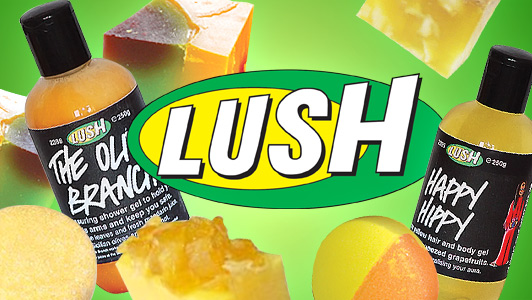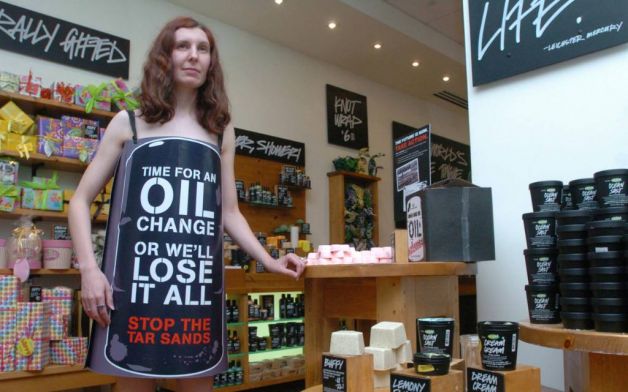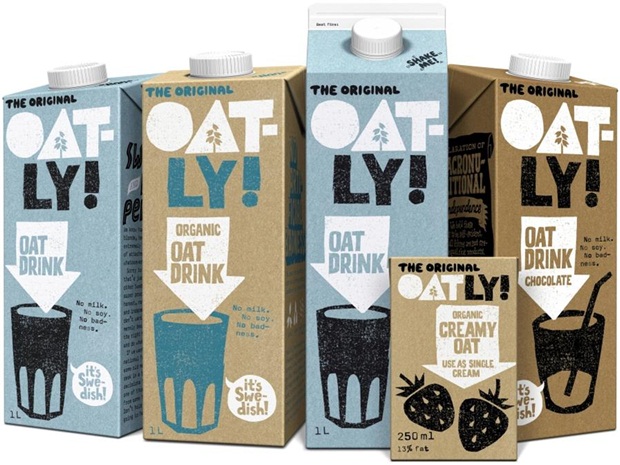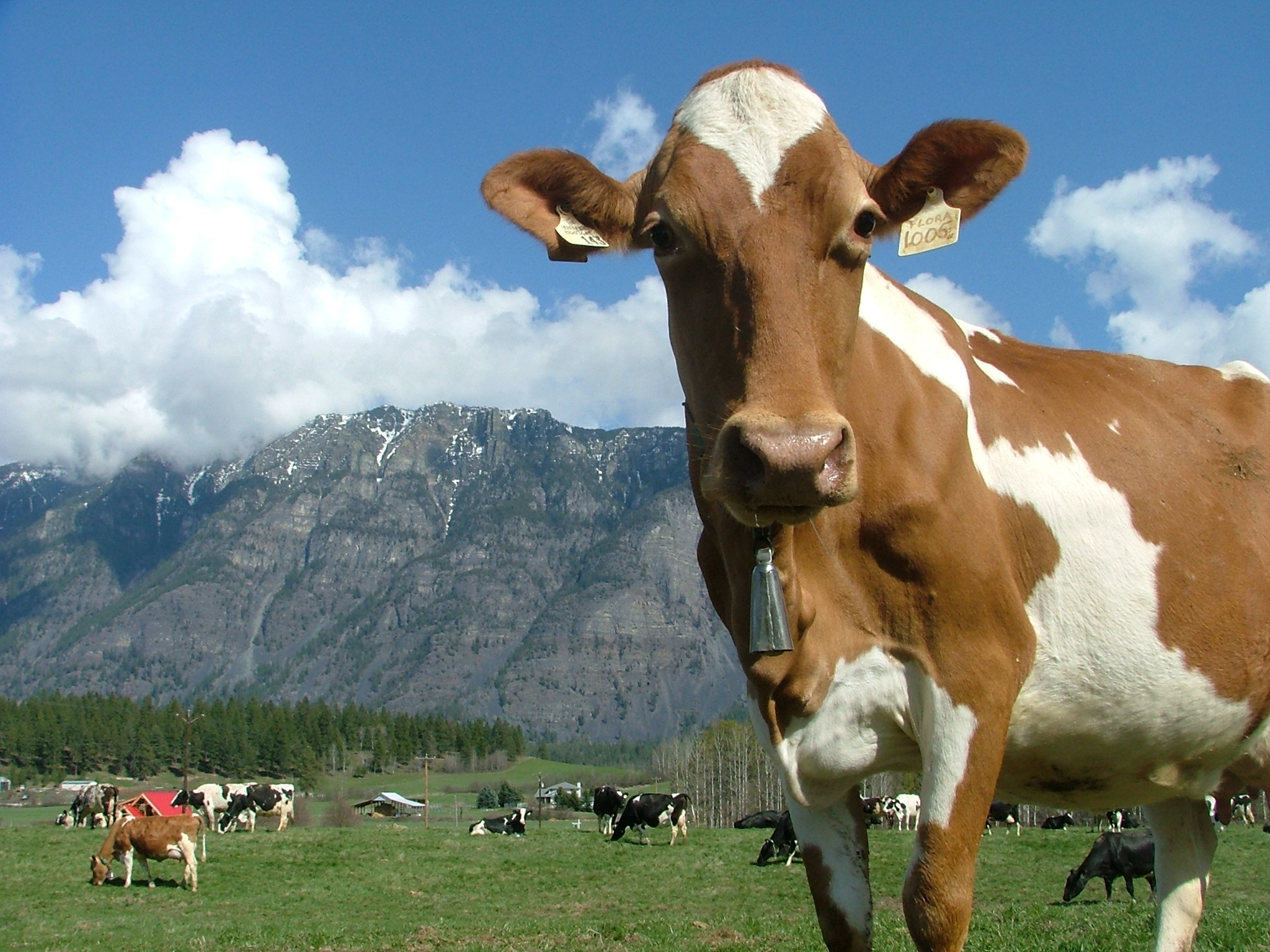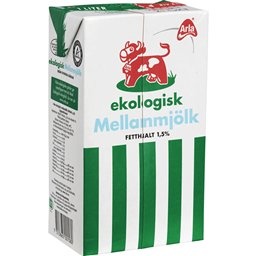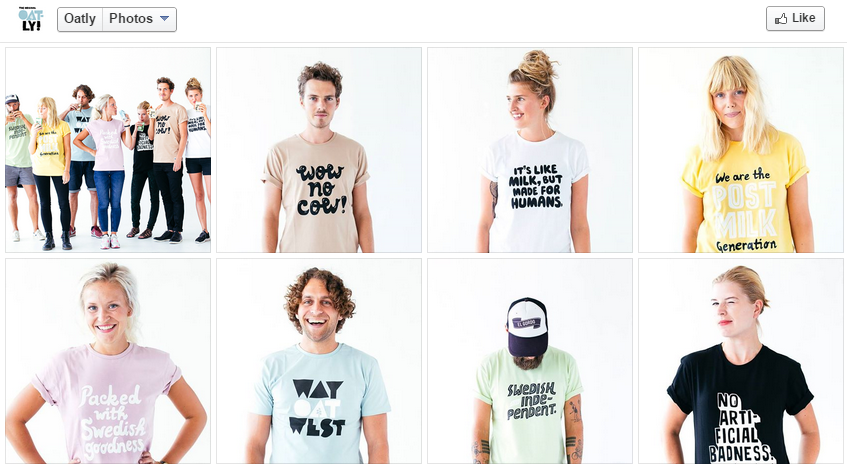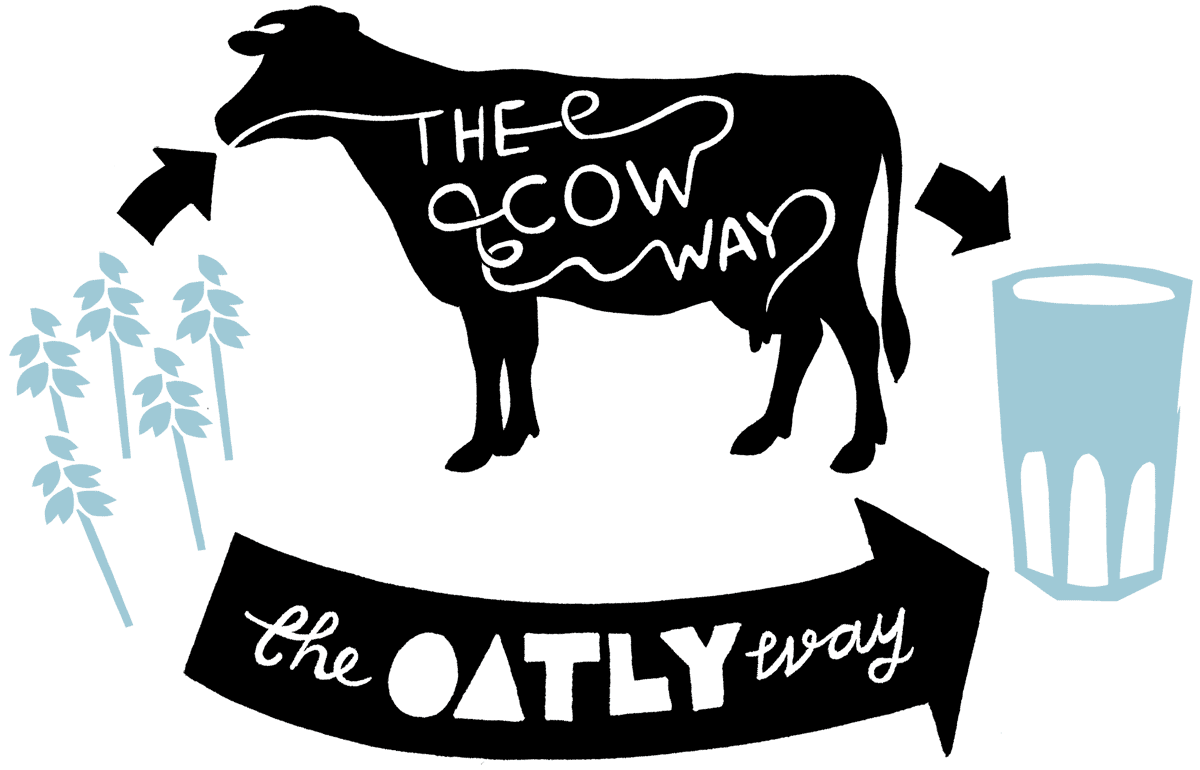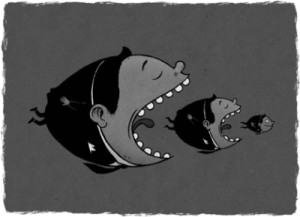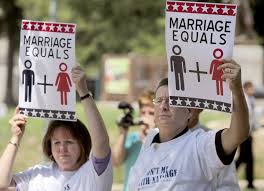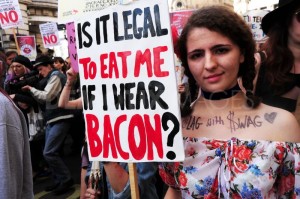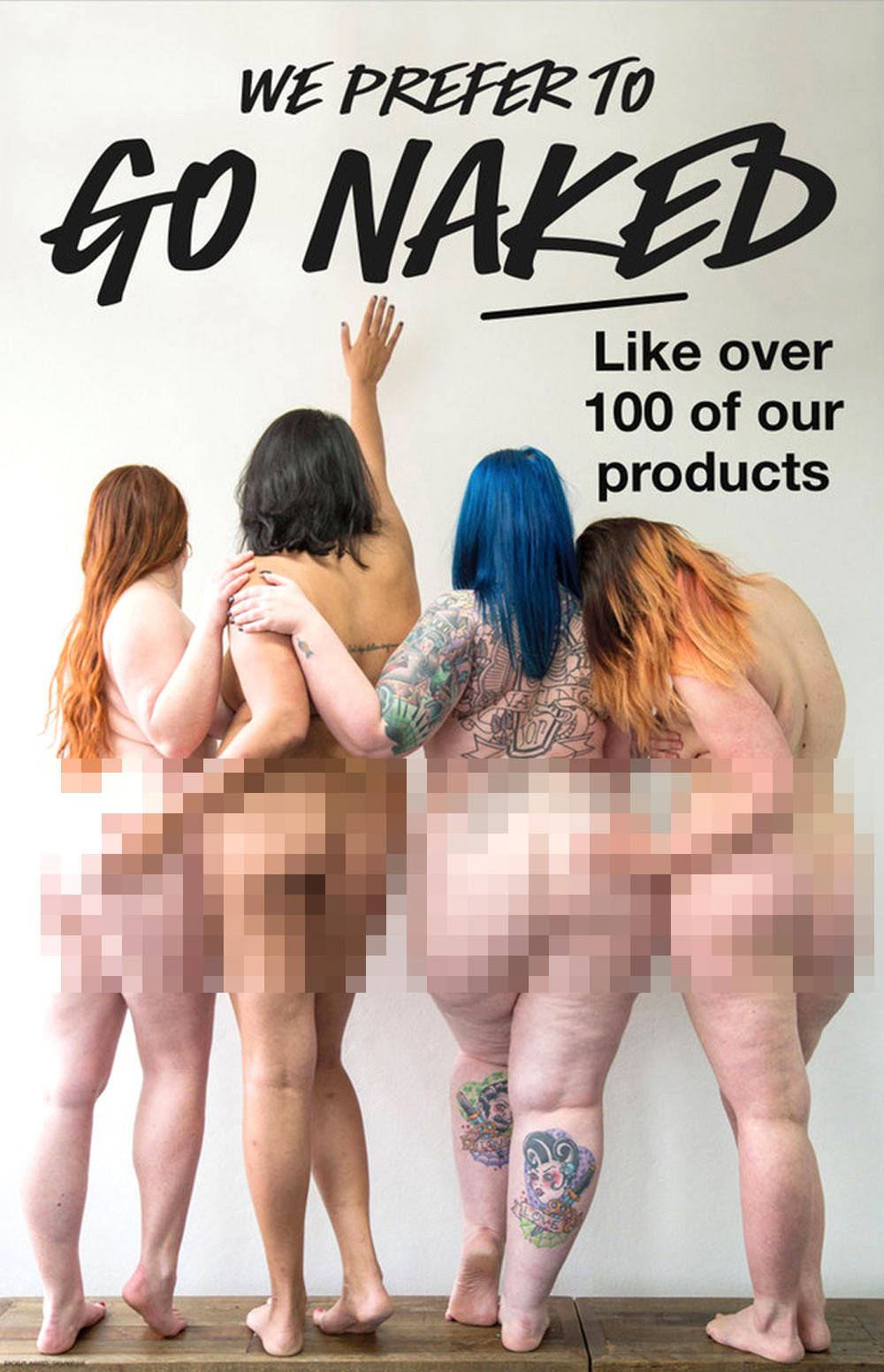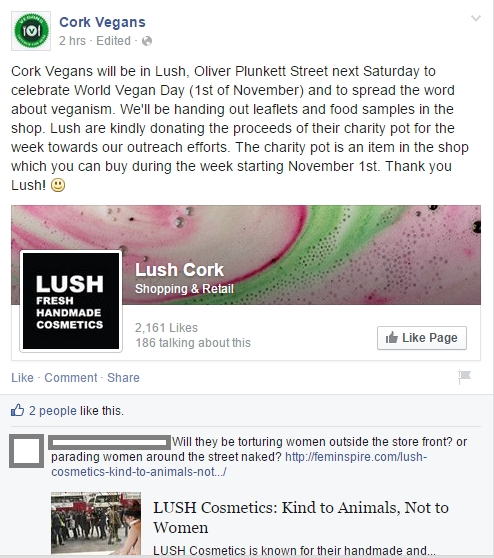By Corey Lee Wrenn, M.S., A.B.D. Ph.D.
Trigger Warning: Discusses pornography and the sexual exploitation of pregnant women.
Not Safe For Work: Contains discussion of pornography and erotic imagery.
Supermodel Marisa Miller, widely regarded as a “sex symbol” for her work with Victoria’s Secret, Sports Illustrated’s swimsuit issues, and Maxim, has posed nude while pregnant for PETA’s SeaWorld ad campaign.
Because the media space is so saturated with sexualized images, pornographers consistently seek to push the edge with more and more taboo or sensational sexualizations.This means that children will be sexualized, grandmothers will be sexualized, pregnant women will be sexualized, etc. This is not to say that children, grandmothers, and pregnant women can’t or don’t feel sexual or enjoy sexual agency–the point is that pornography tries to encroach into spaces where women and girls are traditionally honored and protected from being viewed as a sexual resource to men as a marketing ploy. It is the taboo that sets them apart and sells product. Of course, with, many pornographers taking this route, what was once “taboo” is now accepted and normalized.

PETA also takes a more “traditional” approach in its Seaworld campaign by featuring nude women in public protest who do not appear to be pregnant.
There is definitely a connection between SeaWorld’s imprisoned whales and women in PETA’s ads, but it is not the connection PETA hopes we will decipher: vulnerable demographics are exploited for gain, and this exploitation is seen as entertainment.
We, the viewer, are invited to feel good by consuming, to feel good by gazing at a naked woman and then (maybe) donating to PETA, and to feel good by gazing at a trapped whale and paying admission and buying stuffed Shamus. More importantly, we see it as something the participants “enjoy” doing, and we are discouraged from thinking about the ugliness that lies behind the scenes. In all likelihood, Miller probably did enjoy it, being a supermodel is a career for her. However, we should consider how pornography hurts vulnerable women who do not have the same privilege and access available to wealthy white women. It is important to acknowledge how capitalist framing can obscure the exploitation involved with consumption with imagery of choice, independence, individualism, enjoyment, pleasure, and other good feelings. SeaWorld uses the same rhetoric to justify the imprisonment of their whales: they love what they do. They’re enjoying themselves, so sit back and enjoy the show.
While lacking a feminist critique, Jezebel covers the campaign and admits similar confusion:
A pregnant Miller chilling in a tub makes me think SeaWorld is a place where pregnant Orcas chill in tubs. While that’s by no means a great life for an orca, it’s not exactly the right message.
But maybe the image isn’t meant to be a metaphor at all. Maybe it’s just a continuation of PETA’s long-used tactic of stripping celebrities down as a way of titillating their audience into some kind of low-level version of awareness.
OK, fine. It’s probably that. But it’s still a crappy ad.
Indeed, the level of awareness is quite low. Social psychological research demonstrates that using sex to “sell” ethics backfires. Protest observers actually find the degradation of women to be a serious turn-off. Outside of social movements, research also finds that “sexy” advertising can distract an audience to the point where they don’t even know what was being sold to them.
 Dr. Wrenn is Lecturer of Sociology. She received her Ph.D. in Sociology with Colorado State University in 2016. She received her M.S. in Sociology in 2008 and her B.A. in Political Science in 2005, both from Virginia Tech. She was awarded Exemplary Diversity Scholar, 2016 by the University of Michigan’s National Center for Institutional Diversity. She served as council member with the American Sociological Association’s Animals & Society section (2013-2016) and was elected Chair in 2018. She serves as Book Review Editor to Society & Animals and has contributed to the Human-Animal Studies Images and Cinema blogs for the Animals and Society Institute. She has been published in several peer-reviewed academic journals including the Journal of Gender Studies, Feminist Media Studies, Disability & Society, Food, Culture & Society, and Society & Animals. In July 2013, she founded the Vegan Feminist Network, an academic-activist project engaging intersectional social justice praxis. She is the author of A Rational Approach to Animal Rights: Extensions in Abolitionist Theory (Palgrave MacMillan 2016).
Dr. Wrenn is Lecturer of Sociology. She received her Ph.D. in Sociology with Colorado State University in 2016. She received her M.S. in Sociology in 2008 and her B.A. in Political Science in 2005, both from Virginia Tech. She was awarded Exemplary Diversity Scholar, 2016 by the University of Michigan’s National Center for Institutional Diversity. She served as council member with the American Sociological Association’s Animals & Society section (2013-2016) and was elected Chair in 2018. She serves as Book Review Editor to Society & Animals and has contributed to the Human-Animal Studies Images and Cinema blogs for the Animals and Society Institute. She has been published in several peer-reviewed academic journals including the Journal of Gender Studies, Feminist Media Studies, Disability & Society, Food, Culture & Society, and Society & Animals. In July 2013, she founded the Vegan Feminist Network, an academic-activist project engaging intersectional social justice praxis. She is the author of A Rational Approach to Animal Rights: Extensions in Abolitionist Theory (Palgrave MacMillan 2016).
Receive research updates straight to your inbox by subscribing to my newsletter.
LUSH Cosmetics: Kind(ish) to Animals, Not to Women
By Corey Lee Wrenn, M.S., A.B.D. Ph.D.
LUSH Cosmetics is known for its handmade and largely cruelty-free bath and beauty products. While not a vegan company, LUSH has expanded into the realm of Nonhuman Animal rights advocacy. Under its “Fight Animal Testing” campaign, for instance, LUSH has been pressuring governments to end vivisection, even offering a large cash reward to anyone who can develop a solution.
While a concentrated effort to improve the condition of Nonhuman Animals is commendable, LUSH unfortunately replicates many of the harmful, misogynistic tactics favored by full-time animal rights organizations like PETA. Offering some vegan products in its stores and getting active to end some forms of Nonhuman Animal exploitation is obviously a good thing, but the damage LUSH could be doing to women is alarming.
Take, for example, its anti-vivisection street demonstration that featured a young woman in a nude body suit enduring graphic reenactments of torture at the hands of a male “researcher” for ten hours. The woman was dragged about by a rope tied to her neck, forcibly pushed into various positions, and force-fed. She was pulled by her hair, injected with saline needles, and her head was shaved. While the woman was a consenting professional performer, the pain she endured was clearly real. This event took place in a store window and was fully visible to the public.
The use of a female actor was no coincidence. LUSH explains:
“We felt it was important, strong, well and thoroughly considered that the test subject was a woman. This is important within the context of Lush’s wider Fighting Animal Testing campaign, which challenges consumers of cosmetics to feel, to think and to demand that the cosmetics industry is animal cruelty free. It is also important in the context Jacqui’s performance practice: a public art intervention about the nature of power and abuse. It would have been disingenuous at best to have pretended that a male subject could represent such systemic abuse.”
LUSH intentionally chose a female actor to endure 10 hours of torture in a public space to, in so many words, teach women a lesson. Incidentally, products marketed to women are much more likely to be free of animal testing, unlike men’s products. The next time you are in a store that sells toiletry items, check the packaging of men’s products. How many are cruelty-free? You will be hard pressed to find any. Furthermore, most animal testers, farmers, and slaughterhouse workers are men. Men are more likely to hunt and men consume more Nonhuman Animal products than women. It’s even men who are buying animal hair coats, as the ability to adorn women with “fur” acts a male status symbol. Is it really so disingenuous to question men’s role in the systemic exploitation of animals?
The truth is that women are easy targets. Women are LUSH’s primary customers, and I suspect that LUSH is hoping to frighten women into choosing LUSH products over its competitors. LUSH is drawing on and aggravating the reality of male-on-female violence to secure sales.
LUSH has hosted many similarly problematic promotional stunts. For instance, one anti-vivisection demonstration featured bound women on their knees lined up outside the store with their mouths taped over. A woman dressed as a scientist (drawing on male imagery) loomed beside them. At another store, female employees were dressed as foxes and coquettishly arched their backs, smiling as a man threateningly hovered over them with a kitchen knife.
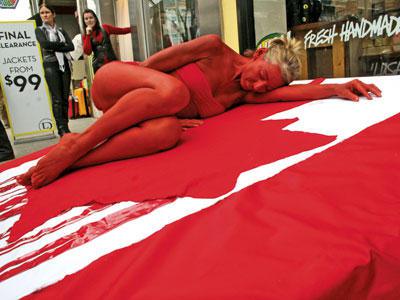
Nonhuman Animal rights organizations frequently use a woman’s body that has been sexualized in some way to represent an abused, tortured, or dead victim. The intentional conflation of sex and violence is particularly problematic.
One store featured a 24 hour storefront display of an anguished woman in a leg-hold trap. In another, a woman was suspended by hooks inserted through the skin in her back to protest shark fishing. In a French store, a woman dressed as a rabbit cried out in anguish as her “fur” was peeled away, displaying her raw flesh below. Her naked body had been painted to resemble bloodied muscles.
LUSH is not afraid to use nudity, either. Protesting oil dependency, naked store employees wore mock oil barrel signs that cheekily read, “Time for an oil change or we’ll lose it all.” In one worldwide event, LUSH employees (who are mostly female) were paraded outside the store wearing nothing but aprons and high heels to hand out leaflets announcing LUSH’s “reduced packaging.” For some stores, aprons read: “Ask me why I’m naked.” Encouraging nude female employees to approach gazing men with LUSH leaflets is unsettling. But, handing out soon-to-be-trashed leaflets to men who are probably not in the market for bathbombs to advertise reduced packaging is just confusing. What’s the real objective here?
Entering a LUSH store is a magical experience, I can’t deny that. Stores are fragrant and colorful, and the staff is friendly and knowledgeable. I love having more than one vegan product to choose from (although I’m still confused as to why LUSH refuses to go completely vegan). I actually wore Karma perfume for 6 years, but I can no longer shop with LUSH (I switched to Pacifica, which is 100% vegan and does not demean its female employees). I also informed my friends to find alternatives to the LUSH gift certificates I often receive.
It is clear to me that LUSH is exploiting the victimization and sexual objectification of women for profit. If LUSH is sincerely expecting these stunts to combat oppression, it might consider that aggravating normalized violence against women is counterintuitive to a campaign hoping to end violence against Nonhuman Animals. A message of peace and justice cannot be clearly articulated through oppressive actions.
There are many completely vegan and genuinely cruelty-free companies selling natural, hand-made cosmetic products that don’t throw women under the bus “for the cause” (or for the company). When (and if) LUSH decides to grant the same respect to women as it purports to grant to Nonhuman Animals, perhaps I’ll be smelling of orange blossom and patchouli again one day. In the meantime, I’m shopping elsewhere.
 Dr. Wrenn is Lecturer of Sociology. She received her Ph.D. in Sociology with Colorado State University in 2016. She received her M.S. in Sociology in 2008 and her B.A. in Political Science in 2005, both from Virginia Tech. She was awarded Exemplary Diversity Scholar, 2016 by the University of Michigan’s National Center for Institutional Diversity. She served as council member with the American Sociological Association’s Animals & Society section (2013-2016) and was elected Chair in 2018. She serves as Book Review Editor to Society & Animals and has contributed to the Human-Animal Studies Images and Cinema blogs for the Animals and Society Institute. She has been published in several peer-reviewed academic journals including the Journal of Gender Studies, Feminist Media Studies, Disability & Society, Food, Culture & Society, and Society & Animals. In July 2013, she founded the Vegan Feminist Network, an academic-activist project engaging intersectional social justice praxis. She is the author of A Rational Approach to Animal Rights: Extensions in Abolitionist Theory (Palgrave MacMillan 2016).
Dr. Wrenn is Lecturer of Sociology. She received her Ph.D. in Sociology with Colorado State University in 2016. She received her M.S. in Sociology in 2008 and her B.A. in Political Science in 2005, both from Virginia Tech. She was awarded Exemplary Diversity Scholar, 2016 by the University of Michigan’s National Center for Institutional Diversity. She served as council member with the American Sociological Association’s Animals & Society section (2013-2016) and was elected Chair in 2018. She serves as Book Review Editor to Society & Animals and has contributed to the Human-Animal Studies Images and Cinema blogs for the Animals and Society Institute. She has been published in several peer-reviewed academic journals including the Journal of Gender Studies, Feminist Media Studies, Disability & Society, Food, Culture & Society, and Society & Animals. In July 2013, she founded the Vegan Feminist Network, an academic-activist project engaging intersectional social justice praxis. She is the author of A Rational Approach to Animal Rights: Extensions in Abolitionist Theory (Palgrave MacMillan 2016).
Receive research updates straight to your inbox by subscribing to my newsletter.
The $29.00 Vegan Poverty Challenge: Classism, Patriarchy and Animal Rights
By Dr. C. Michele Martindill
Let’s play the Gwyneth Paltrow Game, the ultimate food challenge! In this game each one of us has exactly $29.00 to spend on our food for one week and by playing the game we should all learn what it means to live in poverty—at least that’s what we’re supposed to learn according to the #FoodBankNYCChallenge. This $29.00 a week food challenge involves celebrities tagging each other in a game to try and subsist on the Supplemental Nutrition Assistance Program (SNAP) weekly food budget of those living in poverty in the United States. Chef Mario Batali challenged Hollywood personality Gwyneth Paltrow and in turn, sparked a global…well, national…discussion about many things, but not poverty. As observed in numerous online Facebook chats, not even vegan feminist abolitionists could resist this game. How does it work, you ask? In accepting the challenge, Paltrow agreed for one week to eat only what she could purchase with $29.00 and made her purchases public news–one dozen eggs, lettuce, dried black beans, frozen peas, an onion, parsley, a sweet potato, green onions, brown rice, some garlic, a single tomato, one ear of corn, soft tortillas, one chili pepper and seven limes. NOTE: Paltrow confessed she only lasted four days before feasting on “…chicken and fresh vegetables (and in full transparency, half a bag of black licorice)” (Johnson, 2015). That’s the definition of privilege—knowing all along she didn’t really have to stick with the budget.
So, how much have people who followed this story and discussed Paltrow’s shopping trip haul learned about poverty? What are members of the vegan feminist abolitionist movement taking away from the latest Paltrow media frenzy? Here is an opportunity to think reflexively about the white, classist and masculinized privilege that permeates the vegan abolitionist movement, to decenter the vegan perspective and achieve some kind of empathic understanding for those most affected by poverty—women and children.
Before looking at the vegan response to the Paltrow food budget, it is necessary to provide some context for the story. At least twice in the last week vegan abolitionist organizations made disparaging remarks about people looking for jobs in their organizations, and they were ostensibly referring to poor people or the working poor—the very people who don’t see a $29.00 food budget as a game. One author elaborated on why no one should donate to groups requesting help with vegan education and no one should expect to find work in the vegan abolitionist community:
So many ‘advocates’ are attempting to solicit donations to help with vegan education. If you have any spare cash you wish to donate to a worthy cause, please send it to where it will be used to directly help the underprivileged rather than to fund the business or living expenses of organisations or individuals involved in such activities. A conflict of interests–between wanting to end animal use and profiting from attempting to persuade others to end their participation in animal use–is inevitable when donations are needed to indirectly support work of this nature and there is something rather distasteful about those arrogant enough to hold the opinion that their ‘work’ is so valuable that others should provide the means to undertake it. (Grumpy Old Vegans, 2015)
The author is correct in recommending potential donors take care in knowing how their contributions will be used. It is also entirely possible that the author is warning people that vegan organizations should resist the pull of becoming large capitalist corporations with high salaried staff and executives who do little to stop animal exploitation, but do provide padded salaries to executives (Ritzer, 1975). One message is clear: there is no way to both end animal use and profit from the donations of supporters. As Corey Wrenn pointed out in an essay (Wrenn, 2015), there is no way to end animal oppression through capitalism when it is capitalism that is responsible for the oppression in the first place. Still, the language of the above rejoinder was not specifically anti-capitalist and sends a different message to those who might be looking for work just to survive, to be able to feed their families on something more than $29.00 per person per week. Someone could easily understand the author to mean that it is “distasteful” and “arrogant” for anyone—even someone living in poverty—to think their work is valuable enough to deserve a living wage. It was the first, but not last, vegan missive this week to demonstrate how much the vegan abolitionist movement needs to learn about living in poverty.
Another statement made by a different vegan abolitionist organization correctly establishes how the animal rights movement loses momentum when organizations try to stand out from the crowd and make names for themselves by embracing single issue campaigns or doing other things just to garner donations. This group takes a stumble, though, when it presents the following:
Unfortunately, the problem can extend beyond the organizational level. It can threaten our movement even at the grass roots. Individual would-be advocates sometimes become more focused on carving out an activist identity and brand for themselves than on sincerely contributing to a movement focused on nonviolent abolitionist vegan education. Their motivating question switches from “How can I use my skills and opportunities to bring about a world where humans treat animals and each other with respect?” to “How can I differentiate myself from my fellow advocates?” Often due to a simple need for attention and acknowledgment (and, troublingly, sometimes due to the hope of a job, money, or future speaking opportunities) many thoughtful advocates have been driven toward brand-building and self-promotion. [Emphasis added] (International Vegan Association, 2015)
The author stresses that would-be vegan educators too often just want “attention” and maybe hope for a job or some other form of remuneration. That assumption is understandable from the perspective of the dominant white upper middle-class ideology of the animal rights movement, but when seen through the eyes of people living in poverty the statement is problematic. Not everyone can afford the time, financial resources or the energy to be a vegan educator unless they are compensated for the effort—certainly not the working poor who often depend on multiple jobs just to survive. It can feel disheartening to want to help and yet know the organization is only interested in those who have time, money and energy to provide on a volunteer basis—and worse, to read that the poor actually “threaten our movement.” Telling a person that the only thing that matters is for them to “go vegan” won’t help them get over feelings of being on the outside of the movement and different from those who are able to be fully invested activists.
No, not every vegan abolitionist or animal rights organization collects donations, applies for and receives grant money or has resources available to hire paid staff members. The point being made here is that movement members have much to learn about living in poverty, and they need to refrain from calling those who seek jobs “disgraceful,” “arrogant,” “attention” seekers, or “threatening” to the movement. There is also no suggestion that vegans should get busy and cough up charitable donations for the poor. It is instead a call for solidarity. Charity moves from the top down. Solidarity, on the other hand, is horizontal with everyone standing side by side in mutual respect and possessing a willingness to learn. One example that stands out is a recent effort by the Vegan Intersecionality Project (V.I.P.) in Ireland that saw the organization stand in solidarity with squatters at the Grangegorman site, hearing their stories about police harassment and living in poverty (Vegan Information Project – VIP, 2015). The question remains, did vegan abolitionists miss the opportunity to stand in solidarity with people living in poverty in their analysis of the $29.00 per week per person food budget story? Unfortunately, their discussions did not hinge on poverty and would leave an outsider wondering about vegan priorities.
Among the first to respond to the circulation of the Gwyneth Paltrow story on Facebook were those who tried to explain what they would buy with only $29.00 to spend for groceries. One couple stated they already lived on approximately $100.00 a month or $25.00 per week. Others were quick to stress the value of bulk purchases of dried beans and frozen fruit. Oatmeal was a popular choice due in part to its low cost per meal. There was some debate over whether the rules of the challenge allowed for use of staples already on hand, e.g. spices and flour. It was established that they do not. Someone mentioned they would make use of the local food pantry, and the advice was offered that local farmers markets will count each dollar of food stamps as two dollars, up to a maximum of fifteen dollars—yet another helpful suggestion.
Questions were raised in other discussions about Gwyneth Paltrow’s food choices, thanks in large part to a Mother Jones (Oh, 2015) article that suggested the selected foods would only be good for a de-tox diet. At that point things deteriorated into a Gwyneth lovers vs. Gwyneth haters debate. Moving on to the next conversation there was finally someone—one woman–who voiced several key concerns, including: 1) society does not need a wealthy celebrity to explain how SNAP works, how SNAP doesn’t provide enough money for an adequate diet or to pretend to live on a SNAP food budget; 2) society will unfortunately not believe anything unless a celebrity says it; and 3) why doesn’t anybody ask SNAP recipients about their experiences? Why is it that only the voices of privilege are sought after and heard?
Ironically, the Paltrow budget game coincided with #EQUALPAYDAY on April 14, 2015, a day meant to bring to everyone’s attention to the fact that women only make 78 cents to every dollar made by men, a pay gap that has held steady for approximately ten years (The Editorial Board, 2015). Women without any advanced degrees make only 74 percent of what men make. Other facts about poverty were mentioned in the equal pay stories. According to 2013 census figures, there are 46.5 million people in the United States living in poverty. Single-mother families living in poverty number 4.1 million, and the child poverty rate remained steady at 21.8 percent. How many of these people—very real people, not just statistics—are on food stamps? 15.8 million! That translates to 13.6 percent of all U.S. households—the highest level ever. Just over half of these households live below the poverty line and just over 40 percent have at least one person in the household who has a disability. Women comprise almost two-thirds of minimum wage earners, and mothers are the primary or sole earners in about forty percent of all households with children under the age of 18 (Shriver, 2014). Think again about why the world turned to Gwyneth Paltrow to educate everyone about poverty and food stamps. Aren’t there enough people, especially women, living in poverty who could teach us much more? These numbers barely begin to convey the realities of life for those living in poverty, but we continue to make the faces of these women invisible and their voices remain unheard.
Here’s one last observation about the vegans who played the Paltrow game and those who described people looking for work with utter contempt—at a time when the vegan abolitionist movement is trying to demonstrate its intersectionality through practice and to show that veganism is not just a diet, it is interesting that they managed to ignore their own privilege and its consequences. Women living in poverty are not statistical objects who just need to go vegan and poverty is not a game.
References
Grumpy Old Vegans. (2015, April 5). Grumpy Old Vegans. Retrieved from Facebook: https://www.facebook.com/GrumpyOldVegan?fref=ts
International Vegan Association. (2015, April 8). International Vegan Association. Retrieved from Facebook: https://www.facebook.com/internationalvegan?fref=ts
Johnson, Z. (2015, April 16). eonline. Retrieved from E!: http://www.eonline.com/news/647045/gwyneth-paltrow-admits-she-cheated-on-her-29-food-bank-challenge-after-four-days-i-would-give-myself-a-c
Oh, I. (2015, April 12). Gwyneth Paltrow Confuses Her Latest Master Cleanse with Attempt to Relate to the Poor. Retrieved from http://www.motherjones.com/mixed-media/2015/04/gwyneth-paltrows-latest-master-cleanse-people-food-stamps
Ritzer, G. (1975). Professionalization, Bureaucratization and Rationalization: The Views of Max Weber. Social Forces, 627-634.
Shriver, M. (2014, January 8). The Female Face of Poverty. Retrieved from The Atlantic : http://www.theatlantic.com/business/archive/2014/01/the-female-face-of-poverty/282892/
The Editorial Board. (2015, April 14). Women Still Earn a Lot Less Than Men. Retrieved from The New York Times: http://www.nytimes.com/2015/04/14/opinion/women-still-earn-a-lot-less-than-men.html
Vegan Information Project – VIP. (2015, March 24). Vegan Information Project – VIP. Retrieved from Facebook: https://www.facebook.com/theveganinformationproject?fref=ts
Wrenn, C. (2015, January 9). On the Problems with Open Rescues: A Response to the DXE Position. Retrieved from The Academic Abolitionist Vegan: http://academicabolitionistvegan.blogspot.com/2015/01/on-problems-with-open-rescues-response.html
On Swedish Veganism and Goodness: Intersections of Species, Gender, Race, & Nationality
By Anna Nygren
I think about: Buying things, buying food, buying bodies, buying inclusivity and exclusivity and subjectivity.
In Sweden, in the fall of 2014: The company Oatly sells its oat based products with slogans such as “It’s like milk only made for humans” and “Wow, no cow!” which made LRF Mjölk (the national organization for diary producers) angry and they sued Oatly. In the end, I think Oatly won (I’m not very good at understanding trials and commercial law, but I read that the process raised the sales figures). OK, milk producers being upset about what should count as Real Milk is not really a new thing, but still, I think this thing with Oatly and LRF make visible something about the relation between drinking milk and being human…and being Swedish.
The dairy industry quite often sells their products using arguments like, “From Swedish farms.” They also work hard to produce a history of milk-drinking Swedish people, and a Swedish self-image that includes drinking milk from cows. It has worked so well so that “Landet Mellanmjölk” has become almost a synonym to Sweden, referring to a Swedish people as being moderate (“mellanmjölk” means pasteurized cow milk with 1.5 % fat).
Making milk-drinking a criteria for Swedishness not only make violence part of the Swedish history, but also creates a limit for who can be a “real” Swede. It is a definition that excludes everyone who doesn’t want to be part of the milk industry, and it also, very physically, excludes those bodies (for example many Asian-Swedish bodies) that are hurt by lactose and so on. So, LRF’s reaction to Oatly’s campaign also reflects the threat felt by an Astrid-Lindgren-blonde-healthy-good-racist Swedishness to the national self definition.
I hope my references concerning Swedishness are not too internal. I recognize the history of racism and racial biology in Sweden. I think about the “folkhem” (welfare state, literally translated as “the people’s home”), “folkhälsa”/public health, and the violence and exclusions in these concepts. I recognize how Lindgren’s books have been used to define real Swedishness and a romantic nationalism, something light and bright and fresh and white.
I think I love Oatly for challenging this, for saying, “Hey, your products hurt, and that’s not a necessary.” Still, I have a problem with a lot of Oatly’s rhetoric. Because they, in many cases, use the same arguments for selling their products as the milk producers do. Take, for example, the Swedishness aspect. They not only write, “Wow, no cow!” on their products, but also: “No artificial badness,” “Swedish independent,” and “Packed with Swedish goodness.”
Firstly, in the end of 2014, Oatly launched Oatly Apparel featuring t-shirts with their slogans written on them. The photos of the t-shirts on their Facebook page show only white models. People have reacted to this, and Oatly writes that the models are their friends who did the shooting for free, and that they gladly show cool people of other ethnicity, gender and sexuality in other spaces such as Instagram. Looking at their Instagram, I can see that they might be sort of right, but mostly I see only the packages of the products. I think the whiteness of the models are also problematic and connected to “Swedishness.” Seeing a blonde girl dressed in blue jeans, jogging shoes, and a pink t-shirt saying “Packed with Swedish goodness” doesn’t really broaden the definition of Swedishness.
Using Sweden in their rhetoric might be a sort of counter-strategy. For example, it is working against the milk industry, connecting the Swedishness, not with Mellanmjölk, but with oat. And for a buyer in Sweden, the ecological aspect of using Swedish (i.e. local) oat might be of importance.
However, consider also the name. I can only think of American Apparel (and I most often don’t want to think of American Apparel), and well, Apparel might have other connections than American Apparel, but it’s not very often used in Sweden, and I think the choice to use the word might come from a similar strategy as the Swedish-thing. It is a way of using words in a different way: I can think of sexist American Apparel pictures and all the debate about them, I can see non-pornographic pictures with the same word connected to them, and I can think, wow, words can have different meanings, or something like that.
But, I still think the Swedishness aspect is problematic because of the whiteness and because of the “goodness.” Lately, the “goodness” (the superiority, the equality and being-best) of the Sweden (or the [self] picture of Sweden, or of Swedish history) has been questioned in different ways. Recall that Sweden was the first country to have a national racial biological institute. Observe that “neutral” can never be neutral because neutrality can never exist. Remember that Sweden has also enacted war and colonization. Researchers like Tobias Hübinette discuss Swedish whiteness as a discourse of Sweden as the whitest country, with the Swedish whiteness as the purest. This discourse creates violence on a lot of bodies. This Swedish whiteness is what I think about when I see Oatly’s t-shirts. It is a violent whiteness and it hurts. It reproduces a picture of a white Swedishness and Swedish whiteness.
On their website, under the heading, “Swedish independent” Oatly writes:
We know how it sounds. Tall, blond, beautiful, hard to get, extremely liberal with no sense of attachment or responsibility whatsoever. Sorry to disappoint you, that’s just not us. We are the other Swede – somewhat boring, super practical, painfully honest, notoriously hardworking and independent not because we don’t want to be social but merely because we want to have the right to say what we think and do what we think is right.
It’s like, they make fun of the Swedishness, but they hardly challenge the whiteness. They also keep the discussion somewhat middle class-bound (that can be discussed), within a hipster-ish circle, and in line with a discourse of superiority. And then consider the use of the language, the consciousness, the negations. I mean, I think you might only want to abnegate your Swedishness if you’re not really risking losing it, and it might be impossible to distance yourself from it if you’ve never really been included.
So, I think that using Swedishness in any way is problematic. Maybe especially at the moment, when the elections in 2014 gave at hand that the third largest party in Sweden is a racist, nationalistic and fascistic one. I mean, I don’t think that nationalism in any case can save the world, or do much good, because nationalism per se is based on excluding (but still, some sort of “nationalism” might be temporally needed to fight colonialism and so on, though, Sweden doesn’t really need that kind of temporally nationalism).
Secondly, the use of goodness is, I think, another problem. For me, goodness is closely connected to Christian ecclestical discourse, and in the name of that goodness a lot of violent actions have taken place, like missionary colonialism and burning women for being witches. I think: The most violent and cruel actions are often made for goodness sake. And I think: in order for the good to exist, there must be a bad, and for some people to be good, some must be called bad, this creates a dichotomy that will always hurt the Other.
Goodness is also related to the individualistic view of the world. The goodness is tied to the individual person, who, by eating and drinking and buying Oatly’s products will do a good action and become a good person. And the problem is: Not hurting other is something that can never be done for your own ego, because then it is easily the case that what will gain this ego is instead something that will hurt other.
On the webpage for a post-humanist seminar in Lund, Sweden (that I wasn’t able to attend and for which I am crying my eyes out!), I read about the research of Claire Molloy (of the UK). I want to cite it because I can’t write it better!
She also problematized the (at least in the anglo-world) ongoing mainstreaming of (celebrity) veganism, arguing that when veganism becomes another private consumer choice, a hobby to find easy pleasure and fulfillment in, it easily gets detatched from its ethical dimension and radical driving force. The risk is that the long term goal of abolishing the use of animals in food industry disolves and disappears under the horizon.
I think this can be connected to the goodness concept. There are a lot of “good” celebrities, and it seems to me that it is quite easy for them to be “good” because they have the money, the power, and the opportunity. Not everyone has this privilege. This is another reason why goodness is a problem.
So, I think about Oatly, about being good, about buying things and selling things and living in a nation and who could be a part of this nation. I think that the problem is probably the market and the commerce and the capitalism, and the language and discourse existing within these, and building these. I think about violence and veganism and goodness. And the problems of how things get connected. And then, I think, I still like Oatly’s product (maybe except for the t-shirts).
The Patriarchal Orientation of Sex, Race, Economic and Human/Nonhuman Classes
By marv wheale
Neither capital nor labor tend to consider women as a sex class beneath men. Both economic classes are prone to treat sexual relations as private, naturalist, voluntaristic, thereby not collectively antagonistic. Sexual equality is generally perceived as almost a given by men and women of the lower and middle economic classes. They acknowledge some irrational differences that manifest because of poverty and cultural discrimination. Racism is frequently explained along the same lines. Celebrating diversity and commonality are deemed as the answers to sex and race prejudice. Full gender and race equality will be achieved in an economic classless society, they think. So sex and race relations are subsumed into the class struggle and defined in primarily economic terms. At the same time men and women in the capitalist class are mostly white at least in developed nations. They often admit that women, especially women of color and of aboriginal descent (minority men as well) do not have equal economic power to white men but this will be resolved over time with more awareness, education and acceptance of differences. These elite, not unlike their subordinate classes, are resistant to the idea that there is a systemic sex and race division of power inside and outside the marketplace and the state.
In fact the sexes and races are classes too. Anyone who understands social classes knows that they refer to power inequalities not bigotry. Male dominance is a sex class. It signifies the political forms men’s power has taken over time: the sexual allocation of childcare and labour, pornography, sexual harassment, stripping, burlesque, beauty practices, rape, prostitution, battering, obligatory heterosexuality, homophobia, transphobia, the state, capitalism, colonization, the military, etc. Women assimilate into these constructs. They did not determine them. Hence male supremacy is institutional sexism not a natural or solely individual phenomenon. In terms of race class, it was white men in Europe, Australia and North America who organized the government, economy, servitude of men and women of colour, segregation and the occupation of indigenous lands – all illustrations of institutional racism.
As a correlation think about capitalism. Capitalists and workers do not have the same power to dictate each other’s lives. It would be ludicrous to believe that capital is not dominant over labour and that mistrust and intolerance are the causes of the ill feelings towards each other. To see the enmity in economic class divisions as a result of reciprocal misunderstandings would be an obscene misrepresentation of reality. Capitalist rule is institutional economic classism. Mutual respect, dialogue and compromise are not the solutions here to power and powerlessness; abolition is, at the system design level.
Many millennia ago males constructed masculinity thereby creating femininity out of females, causing the rise of the sex class hierarchy. When women were privatized and isolated into pair bonding/marriage it obscured their sex class status and the systemic violence towards them. Conjugality kept them divided against themselves by publicly declaring their primary identification as spouse/wife. Women’s lower economic status is shrouded as well when they marry men because men generally have more wealth. What’s more, women mediate economic class relations between men when they marry across (and within) class lines. Women serve to ease monetary and race class hostility by having men of different classes bond across women’s bodies providing political stability and legitimacy to the whole class system.
As noted by Cheryl Abbate the ascendancy of the male gender is obvious on the basis of aggression alone: “The idea that masculinity is responsible for violence, including sexual assault, is rarely disputed. As Kilmartin points out, the vast majority of violent acts are committed by males, leading us to conclude that there is a high correlation between masculinity and aggression (Kilmartin 1994, 211). According to the FBI (2011), approximately 90% of violent crimes in the United States are committed by men.”
Male dominance exists cross culturally in common and particular local forms too. Women are inferior everywhere in terms of the gendered/sex lines of power. Trouble is, the partitioning is usually defined as the biological sex differences by men (and many women) concealing its sexual politics. When the Left admits that austerity measures and poverty affect women, First Nations and people of colour more than white men, it seems to be aware of the centrality of white male privilege; but the Left doesn’t honestly face the universal historicity of patriarchy, preceding and following primitive accumulation.
Since all the world is a structural stage and the central element is patriarchy, gender conditions our choices in sexual relations in conjunction with capitalism in economic relations. No one purely chooses heterosexuality no matter how much consent there is because the assent is shaped by inequality. Heteronormativity under male imperialism is (man)datory whether it be monogamy, sexual harassment, pornography, prostitution or polyandrous relations. As mentioned earlier, in western countries male monopoly is integrated with white supremacy as the public setting for people of color. The difference is that many progressives suppose race classes should be undone while the majority uphold masculinity and femininity as innate. They only want femininity to be as socially valued and empowering as masculinity. Liberal feminists take this viewpoint that sex work, cosmetics, BDSM, marriage and housework can be liberating.
The following rhetorical questions should resonate with socialists and feminists alike : Do workers meaningfully choose their type of work or place of work? Have women played an equal part with men in conceiving and building the major institutions of society? If working conditions improve would oppression disappear? If women are granted greater legal protection from male violence does their exploitation vanish? If you have satisfying and high paying work, does that imply your work is not exploited? If a woman has high status in society by male standards does that mean she isn’t discriminated against or sexually objectified? As feminist scholar Catharine Mackinnon once said, is “a good fuck…any compensation for getting fucked?” I hope we all have honest answers to these questions. Apply race to these queries, which we must, and you will have another layer of subordination alongside and below white women. Add colonization, sexual orientation, age, disability, body shape and biosphere debasement to the equation, and more intertwining injustices come to light.
Women and Nonhuman Animals
Capitalists, socialists and anarchists have other conceptual barriers linked to male hegemony: an aversion to regarding nonhuman animals as a subjected class. Moreover these speciesist androcentrists dismiss women’s rank in interrelationship to animals’ position. The comparative mirror reveals the oppressions are not the same: women aren’t eaten and animals aren’t usually men’s sexual fetishes, for examples. Nonetheless there are numerous similarities. Dog and pony shows are analogous to beauty pageants and runway modelling.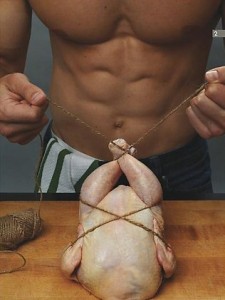 Animals are imprisoned and assaulted in our homes, corrals, barns, laboratories, rodeos, horse races, circuses, zoos, aquariums and fight rings. Women are detained and abused in prostitution, brothels, rape camps, strip clubs, peep shows and in their homes. It is men who typically control these forms of enslavement of women and animals. Domesticated animals are cooked and photographed in sexual postures as the pornography of meat. Women are sexually depersonalized in and by pornography. Harassment is common to either group. Animals and women are most frequently killed by men, and some women have been slaughtered, eviscerated and dismembered like animals by men. In addition, societal assumptions in general that animals “exist” for human welfare should not sound totally different from women’s experiences under male expectations. Even the therapeutic role animals and women play correlate. Most people live their entire lives without learning of the barbarity that occurs behind the closed doors of brothels, pornography studios, massage parlours, sex trafficking, strip clubs and private dwellings on the one hand, and slaughterhouses, vivisection labs, animal entertainment industries, animal traffickers, product-testing facilities, factory farms and households on the other. The business of exploiting women and animals for pleasure, convenience, amusement, taste and moneymaking is intentionally well hidden. Disclosure would undermine the power and profit of male capitalist and socialist enterprises. Men must have their sex and steak at all costs.
Animals are imprisoned and assaulted in our homes, corrals, barns, laboratories, rodeos, horse races, circuses, zoos, aquariums and fight rings. Women are detained and abused in prostitution, brothels, rape camps, strip clubs, peep shows and in their homes. It is men who typically control these forms of enslavement of women and animals. Domesticated animals are cooked and photographed in sexual postures as the pornography of meat. Women are sexually depersonalized in and by pornography. Harassment is common to either group. Animals and women are most frequently killed by men, and some women have been slaughtered, eviscerated and dismembered like animals by men. In addition, societal assumptions in general that animals “exist” for human welfare should not sound totally different from women’s experiences under male expectations. Even the therapeutic role animals and women play correlate. Most people live their entire lives without learning of the barbarity that occurs behind the closed doors of brothels, pornography studios, massage parlours, sex trafficking, strip clubs and private dwellings on the one hand, and slaughterhouses, vivisection labs, animal entertainment industries, animal traffickers, product-testing facilities, factory farms and households on the other. The business of exploiting women and animals for pleasure, convenience, amusement, taste and moneymaking is intentionally well hidden. Disclosure would undermine the power and profit of male capitalist and socialist enterprises. Men must have their sex and steak at all costs.
The truth of the interrelationship of patriarchy, capitalism and speciesism is revealed by vegan feminists who believe it is crucial not to conflate them in ways that are fanciful and offensive to women or untrue of animals. When relating the rape of women and farmed animals for instance, Corey Lee Wrenn calls for respect: “Knowing that about 1 in 3 women have or will be raped, I find it extremely inappropriate to utilize rape imagery to promote veganism. First off, our primary audience is women. If 80% of the movement is women, and 1 in 3 women are rape victims, that means that more than 27% of our movement (or more than 1 in 4 activists) are likely to have been the victim of rape. Any rape victim can tell you, seeing images of rape or reading graphic descriptions is extremely triggering. It is also revictimizing when it is made obvious that our community doesn’t care enough about our safety to avoid using our experiences for animal rights claims on our behalf.” A discerning approach is always necessary to examine these oppressions together and separately.
Transforming Cognizance
Vegan feminists unmask and demystify our personal identities. Part of seeing through the identity fog means admitting the delusions we took for granted, the “habitual patterns” – the assigned gender hierarchies of masculinity and femininity, human species superiority and capital control – reinforced through millions and millions of moments of social learning. Before “awakening” we thought it wasn’t possible for things to be any other way as if these tendencies were an unchanging part of human nature (coming from the stork or written in the stars). These assumptions easily perpetuated themselves because they are some of the most unquestioned beliefs we have. As we begin to grow in consciousness and apprehend the alternatives to the prison of gender roles, non-human animal inferiority and labour submission, we become unstuck from oppressive attitudes. Declaring a primary loyalty to women’s or animals’ or workers’ liberation is now regarded as a misconceived notion. They are different, interrelated and of equal value. There is no complete separation among them when each is understood as they actually exist in the context of patriarchal systems and rules.
All this illustrates the extraordinary power and influence of male ideologies over our consciousness, unconsciousness and societal institutions. They render dissenting views like the abolition of pornstitution, animal products and capitalism as absurd and unintelligible – it has always been this way so it must be this way. Overcoming the suppression of freedom of expression by male dogma is daunting but achievable. Promoting veganism is an essential though utterly deficient way forward. Political engagement in women’s, people of colour’s, workers’ and other species’ emancipation from patriarchal organizational injustice is the ultimate solution. Single issue approaches focusing on higher status animals as in dogs, cats, bears, whales, dolphins, sharks, elephants, tigers, gorillas, etc., does not constitute a serious engagement with comprehensive structural violence when they omit contextual analyses and strategies.
Feminism, Anti-Capitalism and Anti-Specieisism
That deep feminism is the missing underpinning of anti-speciesist socialist/left/anarchist analyses is another point of this reflection. Some pro-animal revolutionaries from these traditions agree that all oppressions including sexism are entangled. However they are reluctant to admit that men, often white males, have dominated the top tiers of monarchial, feudalist, religious, slavery, animal industry, state, military, capitalist, colonialist, family and pornstitution systems. The animalist left typically denies that the male sex class could well be the enveloping power of all social hierarchies throughout (his)tory. Patriarchy was never unvarying. It evolved in various ways depending on how societies were organized within the hierarchies of men of which women and animals had little decision making power. It would be more factual therefore to resolve other class struggles within the broader sex class struggle. Male supremacy should be emphasized as the first among equal subjections rather than one structure among many. Opting for an “interlocking equal oppressions method” has the effect of minimizing foundational sources and influences even though women oppress animals, women capitalists have power over their workers and white women as a group have advantages over people of colour.
How can we devise appropriate strategies to change the world if we don’t analyze it accurately?
Note: Few of the ideas in this post originate with me. The principal ones stem from feminists like Cheryl Abbate and Corey Lee Wrenn who have taught me how to think rationally, critically and inclusively, something my non-feminist teachers failed to do.
As Long As It’s Vegan? Single-Issues, Silos, and Social Justice
Not Safe for work: Contains semi-revealing images of nude woman.
Single-issue campaigning and social movement siloing are toxic for social justice. Despite the veganism’s collective identity as a movement for love and compassion, it has a remarkable tendency to dismiss human injustices under the banner of “nonhumans first.” The “as long as it’s vegan” ideology has been used to protect nazism, rape, racism, and other manifestations of bigotry in the Nonhuman Animal rights movement, stifling critical thought and eliminating any chance for coalition-building.
What makes this ideology so insidious is that its adherents often believe themselves to be a compassionate activist committed to Nonhuman Animals at any cost. While this is, of course, admirable, it is also a self-concept which inhibits self-reflection. Because the movement is white-centric and post-citizen (meaning that most vegan activists already have a number of essential rights and privileges established for themselves), it becomes very difficult for them to acknowledge how many humans still lack these rights.

In one of several misogynistic live action advertisements, LUSH hired a street performer in a nude bodysuit to enact gruesome scenes of vivisection for approximately 10 hours.
This is aggravated by segregation; when privileged groups do not have to interact with disenfranchised groups, it is easy for them to ignore or downplay the experiences of others. Membership in a white-centric, middle-class social movement only reinforces these walls of separation.
Consider, for instance, this Irish grassroots group’s promotion of LUSH Cosmetics products on World Vegan Day. LUSH is known to regularly engage misogynistic tactics to scare or shame women into buying its products. It also mirrors People for the Ethical Treatment of Animals in prostituting women’s bodies to grab media attention and sell goods. The group announced that it would be leafleting outside the Cork LUSH store and accepting donations from LUSH for every “Charity Pot” lotion product that is purchased.
When confronted with LUSH’s misogynist business ethic, this local vegan community predictably employed a number of tropes to restore its positive self-image. First, it suggested that as long as individual women “choose” to participate, this supposedly absconds the organization that hosts the event as well as all involved parties from any responsibility for the negative consequences for women as a class.
Second, it is mistakenly argued that the inclusion of “men, too” would eliminate the misogyny of these tactics. But this falsely presumes that society is gender-neutral and that sexualized violent imagery of women would be interpreted equally with equal impact.
Third, for the purposes of this essay, this group also highlighted that the supposed animal-friendliness of the company trumped any misgivings about its misogyny. Nonhumans first.
As these deflections illustrate, there is a profound disconnect between the oppression of women and the oppression of other animals. The logic that normalizes the commodification and sexualization of violence against women is the same logic that normalizes the commodification and fetishization of violence against animals.
The vegan movement’s confusion over this intersection is all the more evident in its bizarre alliance with LUSH. LUSH is not a vegan company. It is a speciesist industry that profits from the the sale of Nonhuman Animals’ bodies, products, and labor. Bizarre though this relationship may be, it exemplifies how a movement culture that devalues intersectional awareness can undermine Nonhuman Animal interests. Putting “nonhumans first” may unwittingly be putting nonhumans last.
That activists appeal to the marketplace to support their single-issue focus is not surprising. I am of the persuasion that intersectional failure is intimately bound to capitalism and its intentional fanning of individualism and false consciousness. This ignorance is key for the perpetuation of an oppressive system. It undermines efforts for equality.
Any movement, faction, organization, or activist that fails to acknowledge the root cause of capitalism in manifesting inequality will never achieve its goals. By participating in capitalist enterprise, vegans only contribute to the humane-washing of an inherently violent economic system. For resource-starved grassroots groups, it is all too tempting to partner with speciesist industries who trade attention and platform for community approval and immunity from protest.
This trade-off is not a wise one. “As long as it’s vegan” does Nonhuman Animals no favors if it destroys the movement’s ability to be taken seriously as a social justice effort. Neither is it helpful if it normalizes frameworks of oppression, as these frameworks are not species-specific but universally dangerous.
 Dr. Wrenn is Lecturer of Sociology. She received her Ph.D. in Sociology with Colorado State University in 2016. She received her M.S. in Sociology in 2008 and her B.A. in Political Science in 2005, both from Virginia Tech. She was awarded Exemplary Diversity Scholar, 2016 by the University of Michigan’s National Center for Institutional Diversity. She served as council member with the American Sociological Association’s Animals & Society section (2013-2016) and was elected Chair in 2018. She serves as Book Review Editor to Society & Animals and has contributed to the Human-Animal Studies Images and Cinema blogs for the Animals and Society Institute. She has been published in several peer-reviewed academic journals including the Journal of Gender Studies, Feminist Media Studies, Disability & Society, Food, Culture & Society, and Society & Animals. In July 2013, she founded the Vegan Feminist Network, an academic-activist project engaging intersectional social justice praxis. She is the author of A Rational Approach to Animal Rights: Extensions in Abolitionist Theory (Palgrave MacMillan 2016).
Dr. Wrenn is Lecturer of Sociology. She received her Ph.D. in Sociology with Colorado State University in 2016. She received her M.S. in Sociology in 2008 and her B.A. in Political Science in 2005, both from Virginia Tech. She was awarded Exemplary Diversity Scholar, 2016 by the University of Michigan’s National Center for Institutional Diversity. She served as council member with the American Sociological Association’s Animals & Society section (2013-2016) and was elected Chair in 2018. She serves as Book Review Editor to Society & Animals and has contributed to the Human-Animal Studies Images and Cinema blogs for the Animals and Society Institute. She has been published in several peer-reviewed academic journals including the Journal of Gender Studies, Feminist Media Studies, Disability & Society, Food, Culture & Society, and Society & Animals. In July 2013, she founded the Vegan Feminist Network, an academic-activist project engaging intersectional social justice praxis. She is the author of A Rational Approach to Animal Rights: Extensions in Abolitionist Theory (Palgrave MacMillan 2016).
Receive research updates straight to your inbox by subscribing to my newsletter.



